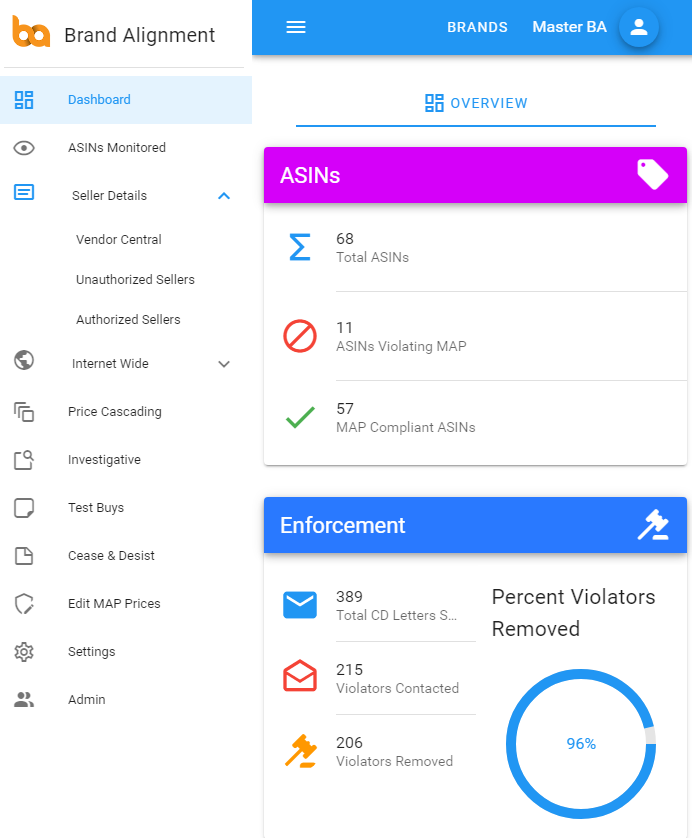Which Amazon Brand Protection Agency Do I Choose? Learn About the Most


If you're creating a Minimum Resale Price (MRP) policy to affect all reseller pricing, including both stated and actual resale prices, you'll need to make it unilateral.
The US Supreme Court declared that unilateral pricing practices are completely legitimate as long as both the maker and the reseller are independent actors allowed to make their own pricing judgments. (Unilateral price policies are commonly referred to as "Colgate policies" because of this.)
The Court reasoned as follows: The manufacturer is free to create its own reseller pricing standards and to inform all retail partners of those guidelines as well as the repercussions for breaking them. All resellers are then free to choose whether or not to follow the price recommendations or risk facing the repercussions if they do not. These unilateral practices are entirely legal as long as both parties have that independence and haven't reached an agreement on price setting.
But, here's the thing..
Although the law allows businesses a little more flexibility with MAP policies (Looking for a Map enforcement company?) than it does with MRPs, this is because MAP addresses only advertised pricing, never the actual sales price. Even if you create a MAP policy enforcement program based on a two-way agreement that your resellers sign, you may still be subject to antitrust scrutiny. To be safe, even your MAP policy should be structured as a unilateral collection of instructions rather than an agreement.
When speaking with a retail partner who has broken your policy, refer to the transgression as a violation of your branding rules rather than a price violation. This may appear to be a minor legal detail, but it may persuade an antitrust regulator or court to consider your policy enforcement in a more favourable light.
When you say in your message to a policy violator that they've disobeyed your pricing guidelines and that they'll need to take the following steps to get back into your company's good graces as a good retailer, the law might interpret that as establishing a pricing agreement that's a little too close to the line. That's a dangerous legal region to be in. Much safer and better, then, to refer to infractions against your MAP or MRP as branding-guideline violations or violations of your store policy guidelines, even if they are clearly price-related.
The federal Sherman Antitrust Act which, amazingly, is still in existence despite though it was passed in 1890, defines such acts as a conspiracy in restraint of trade.
And, while the US Supreme Court has weakened the statute by holding, for example, that not every trade constraint is illegal on its face, only unreasonable regulators have the authority to determine what constitutes a conspiracy.
The simple act of discussing where to set your MRP or MAP policy minimum prices with your big retailers before creating your policy could be considered an antitrust violation.
When it comes to reseller pricing, this is one of the most prevalent blunders made by manufacturers and brand owners. When a company needs an MRP, for example, some companies grab the wrong template to duplicate a MAP policy.
Others utilize legalese that is improper for their company's position, or even unlawful, because they don't know where the legal lines are drawn and neither did the company whose MAP template they copied.
Although you can find plenty of existing reseller policy documents online, and while much of the language in these policies may read like standard legal boilerplate, implementing one for your business requires a thorough understanding of both the legal and business nuances of attempting to influence your resale channel's advertising and selling practices.
For this reason, and a thousand more we'd be pleased to discuss with you but can't fit into this article, we strongly advise you to create and implement your MAP or MRP strategy with the help of brand protection experts and/or antitrust counsel.
One of the easiest traps for a manufacturer to slip into is this one. It can occur absolutely unintentionally. Consider the possibility that one of your key retail partners is once again displaying your products below your MAP-approved rates.
Let's look into this further..
Your MAP policy on such infractions is extremely clear: The first offence results in a warning, while the second results in a sanction, such as the withholding of inventory from the offender for a period of time. Your employer has already issued a warning to this merchant, but when your colleague calls this time, the retailer's representative begs forgiveness and vows not to do it again.
Your employer may have unwittingly undertaken an illegal act if your colleague agrees and lets the second infraction go with a second warning. One of the main fundamental foundations of antitrust law is to prevent corporations from banding together to regulate prices and restrict other companies' trade. An antitrust court could interpret your behavior as price-fixing if you give one store preferential treatment over another when enforcing your pricing policy.
It could be absolutely innocent, merely a case of a sales representative at your organization not wanting to punish a repentant retail partner too harshly. However, you must exercise caution because it may still be prohibited.
The first step in removing unauthorized sellers is spotting them on your listings and that is exactly what the Brand Alignment Monitoring Dashboard will do for you. With price updates every 3 hours and inventory totals for every seller on every listing, you will get the most complete picture possible of your brand on every major online marketplace.
Of course, the most important step in removing unauthorized sellers is prevention and enforcement. This is where Brand Alignment is leagues above the competition when it comes to map policy enforcement software.


100% Satisfaction Guaranteed

Free Marketplace Evaluation
In short, the answer is Yes.
We have had our 80%-90%+ enforcement rates in every single industry we have worked in. That includes the following:
As you are already aware, each industry has their own bells and whistles. Please contact us if you have any specific questions about enforcement in your industry.
Brand Alignment gives the brand the option of using their own personal cease & desist letters or the option to customize Brand Alignment's proven high performance Cease & Desist letters. These letters were crafted by Intellectual Property lawyers with a full focus on minimizing liability.
Any infringement complaints filed by Brand Alignment are done with the utmost care and transparency. We do not file counterfeit complaints without test buys and approval from the brand. Our trademark complaints are done with caution and all bases covered.
Finally, in this world, anybody can sue anybody for anything. But it does not mean it will stand up in court. There is nothing we can do to prevent frivolous lawsuits from disgruntled sellers. However, we do everything we can to prepare you to have any case against you quickly dismissed. After two years in business, we are proud to say that neither us or any of our brands have had any legal issues of any kind related to our service.
If you are new to shopping for a brand protection provider, it might be confusing to tell the difference between companies. It might sound like everybody offers the same type of monitoring and enforcement. This could not be further from the truth.

100% Satisfaction Guaranteed

Free Marketplace Evaluation

You are fully protected by our "Brand Alignment Enforcement Guarantee". If we don't reach the custom benchmarks that we agree upon during negotiation, we will give you the option to terminate the contract and you will not be charged any further.
Emmanuel Frost
P.S.: Due to the constant changing nature of online marketplaces, our Enforcement Guarantee is a limited time offer.
Please contact us now to ensure you are locked in with your guarantee.
Read Our Other Articles!

Which Amazon Brand Protection Agency Do I Choose? Learn About the Most

Shadow Hierarchy: How Grey Market Sales Really Work How Grey Market Sellers

The 8 Types of Unauthorized Sellers on AmazonAnd How to Remove Them!Who Are
Copyright - Brand Alignment
All Rights Reserved 2020